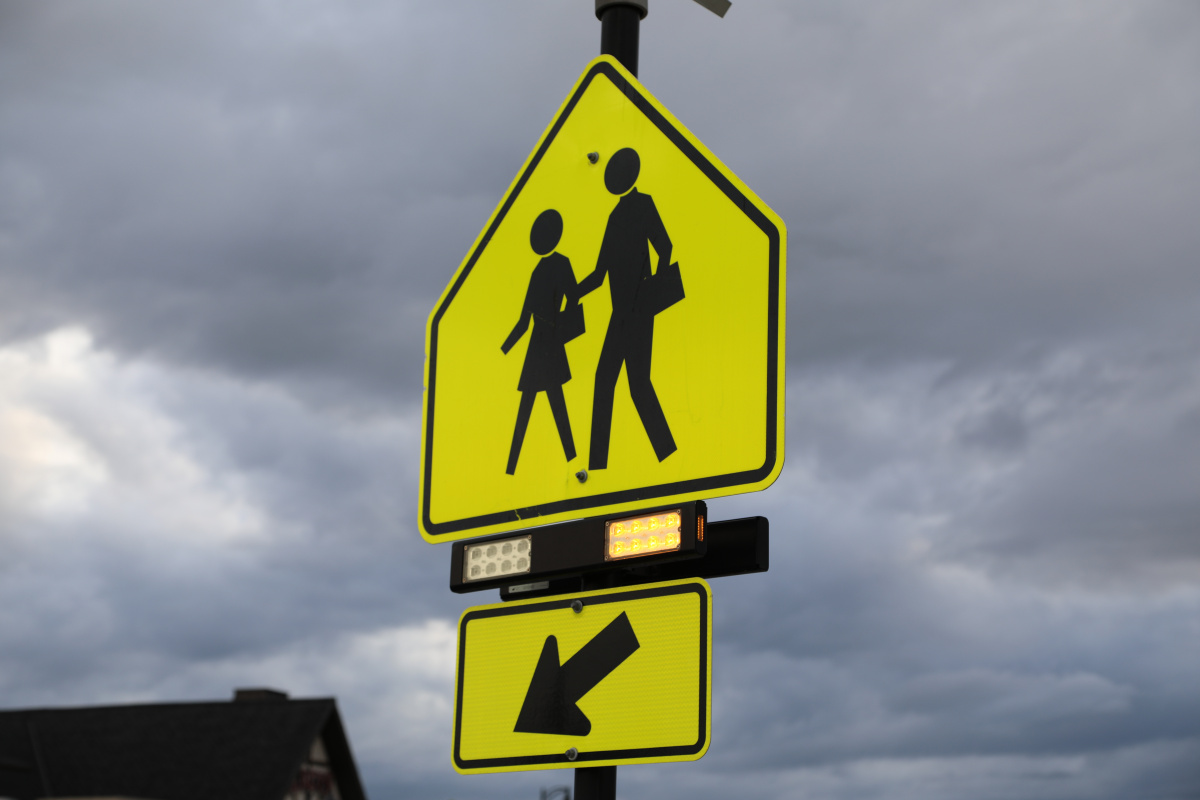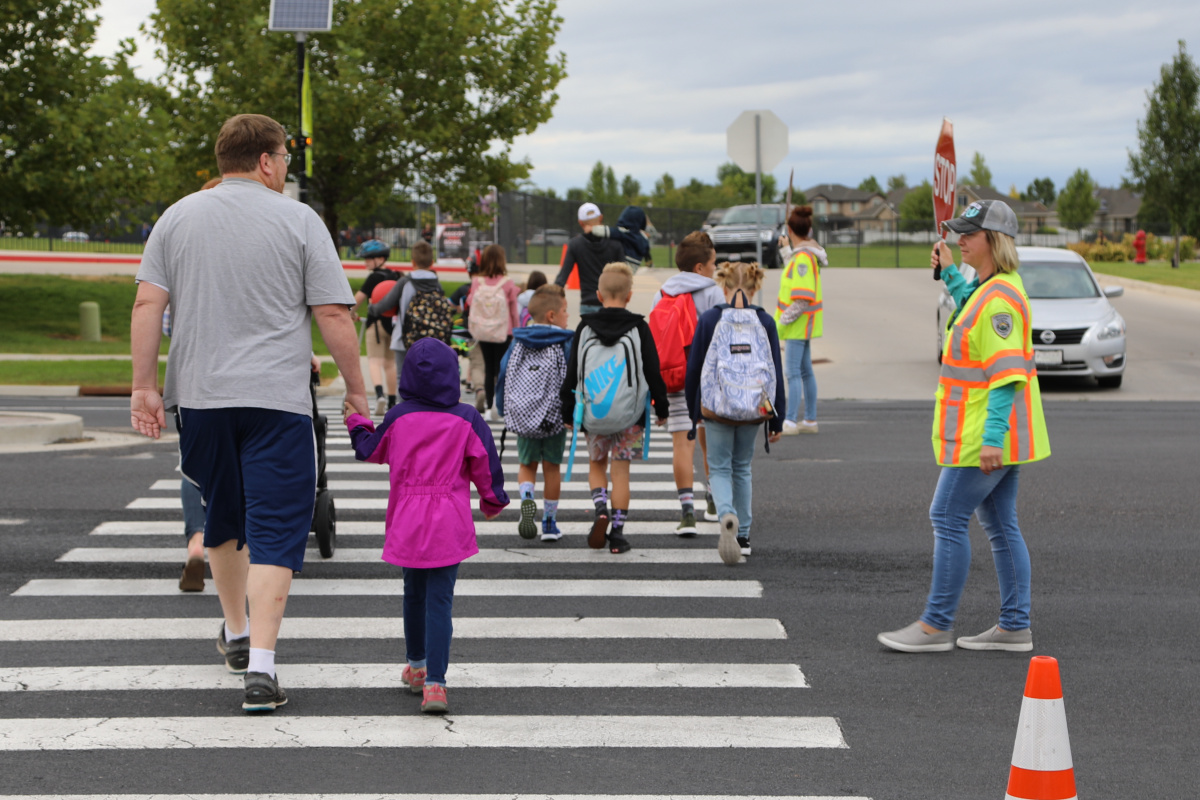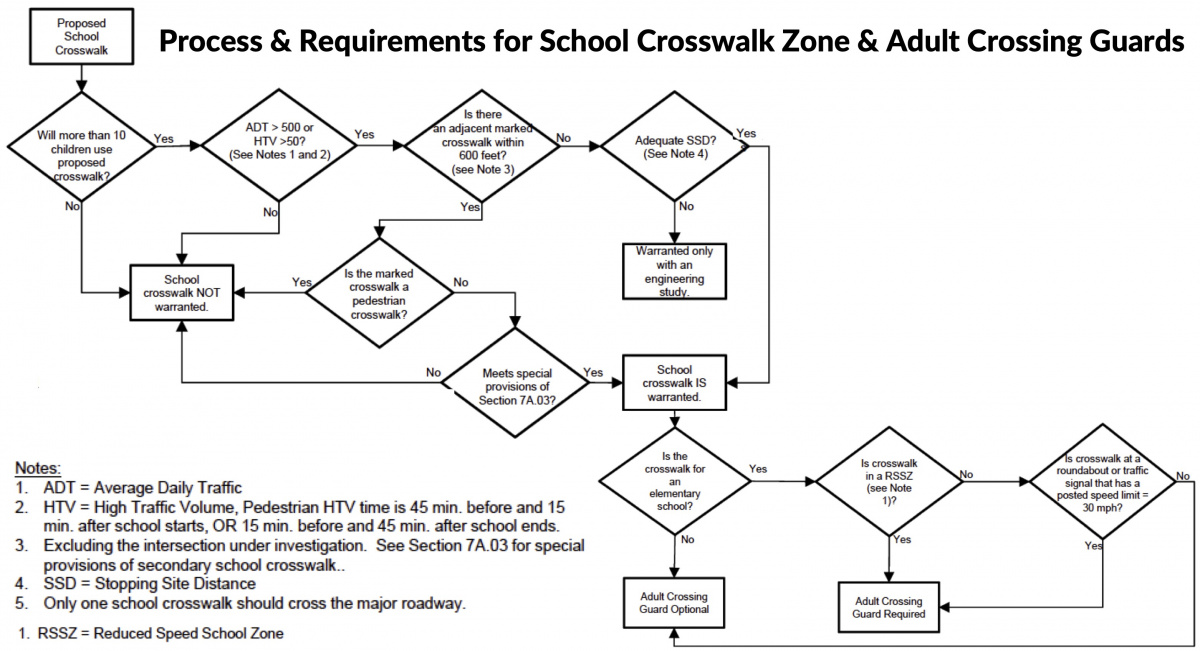5355 West
Herriman Main Street
Herriman, UT 84096
Safe Walk Routes—How Do They Work?
Safe Walk Routes—How Do They Work?
A message from the Deputy Chief of Police
With school back in session, most of us have driven through an active school zone this week. But have you ever wondered how these school zones and safe walk routes are established? Who decides what goes where and who controls it? With more than 15,000 Herriman children moving to-and-from school every day, it is quite an undertaking.
The process begins with a clearly-established set of rules and guidelines created by the Utah Department of Transportation in cooperation with federal, state, and local agencies, school districts, transportation engineers, and public safety professionals. These guidelines are published in a document known as the Utah Manual on Uniform Traffic Control Devices (the “MUTCD”). Within the MUTCD are a series of standards for designating a “Safe Walk Route”. A few key points to consider as you read further:
- The purpose of a Safe Walk Route is to facilitate the safest possible pedestrian route from a child’s home to school. Although we make every effort for convenience, sometimes the safest route is not always the shortest or most convenient.
- Safe Walk Routes are intended for elementary school-aged children. Older children in middle school and high school are presumed to be responsible enough to cross the road and navigate traffic safely without adult supervision. Most middle schools still have a designated Safe Walk Route, although it is usually less specific. Although the MUTCD allows for the use of adult crossing guards for middle schools, their use is rare and usually reserved for significant traffic locations with high speeds (think the crossing by the sky bridge at Bangerter Highway and 13400 South for example).
- Designated school crossings at an intersection controlled by another traffic control device (stop sign, traffic signal, etc.) are always safer than a mid-block crossing with no other traffic control. Wherever possible, Herriman City has set a policy of routing the Safe Walk Route to avoid mid-block crossings.
- In the State of Utah, getting your child to school is the responsibility of the parent. The city, school, police department, and school district all play a role to help facilitate the safest possible route, but in the end it is the parent who must decide how their child commutes to and from school.

The MUTCD outlines where we are allowed to install/place traffic control devices such as school crosswalks, flashing lights, reduced speed schools zones (20mph zones), and adult crossing guards. There are minimum standards for each, and if the minimum standards are not met, the traffic control device is not warranted. For example, the graphic at the bottom of the page outlines the warrant process for an adult crossing guard at a school crosswalk. First, the school crosswalk itself has to be warranted, which requires that more than 10 children will use the crossing, average daily traffic volume exceeds 500 vehicles, there is no other marked crosswalk within 600 feet, and there is adequate sight stopping distance. If the school crosswalk is not warranted, we cannot place an adult crossing guard at that location. If the school crosswalk is warranted, we are required to place a crossing guard if the crossing is in a 20mph zone or at a roundabout. All others are optional and at the discretion of the City.
Adult Crossing Guards are hired, trained, and staffed by the Herriman City Police Department. We currently have 48 school crossings in the City that are staffed by 55 assigned and substitute crossing guards. Our crossing guards are an integral part of our public safety team and we are grateful that they are willing to help our children cross safely, rain or shine.
So what’s the process? Each year in the early spring, Herriman City traffic engineers and police department representatives meet with the administration of every school in Herriman (district, charter, or private). Usually, a representative from the school community council is also present as well as the school district safety personnel, if applicable. In that meeting, the school’s Safe Walk Route is reviewed and any concerns or changes are discussed in detail. Typically, the school community council representative will weigh in heavily on issues brought to the SCC’s attention by parents during the previous school year. These issues are discussed and solutions are brought to the table. Sometimes follow-up meetings are needed to resolve larger issues. Concerns or changes can be initiated by any stakeholder through this process.
These collaborative meetings are critical and give all stakeholders the opportunity to weigh in prior to the Safe Walk Route being finalized. Although the City makes every effort to resolve parents’ and administrators’ concerns, sometimes the solution to a given problem is not what they would like to see happen. In these cases, the City Engineer (who has legal responsibility for traffic safety in the City) has the final say, with some advice from the other stakeholders involved.
Once the Safe Walk Route has been established, the official forms are submitted by the school to their respective district administrator or governing board. The City Engineer, police department, City Manager, Principal, School Community Council representative, and district representative all have to sign off on the final designated Safe Walk Route. These are then submitted to the State as an official record. Once the Safe Walk Route has been finalized, the school will then distribute that information to their patrons/parents through any method they feel is best. A copy of the Safe Walk Route is available at the school. The City’s GIS department produces maps for convenience to accompany the Safe Walk Route plan.
Before school gets out for the summer, the Safe Walk Route for the following school year is already in place. If you live in an area that is built-out where not a lot of development occurs, the Safe Walk Route may not change at all from year to year. With our rapid growth in Herriman, our Safe Walk Routes change significantly at some schools. The Jordan School District broke ground recently on another new elementary school in northwest Herriman. With the opening of that school planned for the fall of 2022, we have already begun the process of evaluating the significant changes to all JSD Safe Walk Routes that will change with the new school boundaries.
Safety is our primary concern throughout this process. Our school partners laugh at me sometimes in meetings when I remind them “it’s called a safe walk route, not a convenient walk route,” a mantra I was taught by a friend and former chief. Please know that we care as much about your children’s safety as you do and we make every effort, within the reasonable guidelines of the MUTCD, to provide the safest possible route for them to walk to school. We would love to provide crossing guards at every intersection for every school, but it is simply not practical, nor is it a responsible use of your tax dollars. We love that we are a young, growing city and are fully committed to addressing traffic and school safety concerns in the best and safest way possible. We are always available to discuss concerns and answer questions. Please feel free to reach out.
Cody Stromberg
Deputy Chief of Police
cstromberg@herrimanpd.org
Other contacts
Bethany Zeyer, Crossing Guard Coordinator
bzeyer@herrimanpd.org
Jonathan Bowers, City Engineer
engineering@herriman.org

 RSS Feed
RSS Feed


 Add to Favorites
Add to Favorites